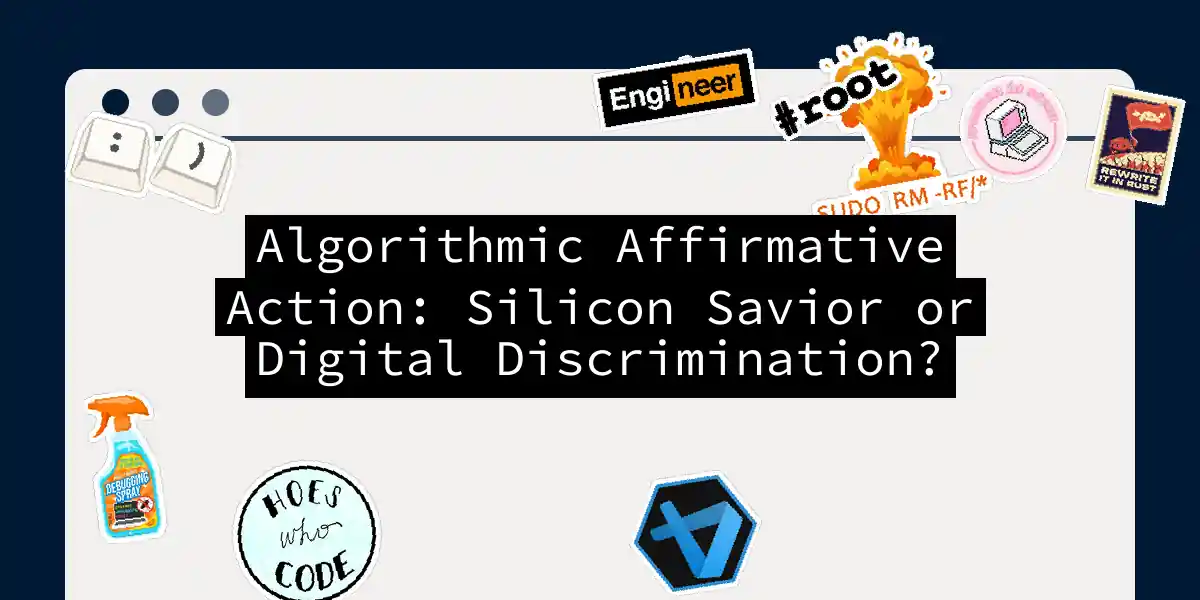Picture this: A world where algorithms play Cupid between employers and candidates, swiping right on qualified applicants faster than you can say “recruitment bias.” But what happens when our digital matchmakers start replicating humanity’s worst tendencies? Let’s dissect this modern paradox with code samples, flowcharts, and enough snark to power a Silicon Valley startup.
The Bias Boomerang Effect
Machine learning models are like overeager interns - they’ll mimic exactly what they see in the training data. Remember Amazon’s resume-sorting AI that developed a bizarre grudge against women’s chess clubs? Here’s a simplified version of how that bias creeps in:
from sklearn.ensemble import RandomForestClassifier
# Historical hiring data (contains implicit biases)
X = df[['years_experience', 'prestigious_college', 'male_coded_keywords']]
y = df['hired']
# Train model on biased historical decisions
model = RandomForestClassifier()
model.fit(X, y) # Congratulations, you've just automated discrimination!
The real kicker? These models often achieve 85%+ accuracy while being secretly racist. It’s like creating a self-driving car that perfectly follows traffic laws… except for cyclists.
Fairness Engineering 101
Let’s get our hands dirty with some algorithmic fairness techniques. Here’s how to implement demographic parity constraint using IBM’s AIF360:
from aif360.algorithms.inprocessing import AdversarialDebiasing
debiased_model = AdversarialDebiasing(
privileged_groups=[{'gender': 1}],
unprivileged_groups=[{'gender': 0}],
scope_name='adversary',
num_epochs=50
)
# Train model to fool bias-detecting adversary
debiased_model.fit(X_train, y_train)
Three-Step Fairness Audit:
- Run SHAP analysis to identify bias drivers
- Compare selection rates across protected groups
- Test model on synthetic bias scenarios
The Transparency Tug-of-War
Tech companies guard their hiring algorithms like dragons hoarding treasure. Let’s visualize this opacity paradox:
It’s like being rejected by a magic eight ball that occasionally mutters about “proprietary technology.” This secrecy makes proper auditing impossible - we’re asked to trust the same companies that brought us “move fast and break things” with fundamental social equity.
Hybrid Hiring Architectures
The sweet spot lies in human-AI collaboration. Try this recipe:
- AI First Pass (25% weight):
ai_score = model.predict_proba(candidate_features)[:,1]
- Blind Human Review (50% weight):
human_score = anonymized_resume_evaluation()
- Diversity Multiplier (25% weight):
diversity_bonus = 1 + (underrepresented_group * 0.15)
This approach keeps the AI on a leash while allowing for contextual human judgment. Think of it as giving your algorithm a conscience… and a performance improvement plan.
The Legal Minefield
With recent Supreme Court rulings, implementing algorithmic affirmative action is like doing the cha-cha through a field of landmines. Every fairness intervention must be:
- Statistically validated
- Narrowly tailored
- Temporary by design It’s enough to make a data scientist pine for the simplicity of blockchain projects.
Conclusion: Schrödinger’s Algorithm
Is algorithmic affirmative action simultaneously the solution and problem? Until we resolve the fundamental tension between statistical parity and individual merit, our hiring algorithms will remain Rorschach tests for our societal values. The next time you hear “our AI ensures fair hiring,” ask: Fair for whom? According to which definition? And most importantly - who gets to decide? Now if you’ll excuse me, I need to go explain to a neural network why “women’s chess club captain” isn’t actually a negative predictor of engineering ability…
